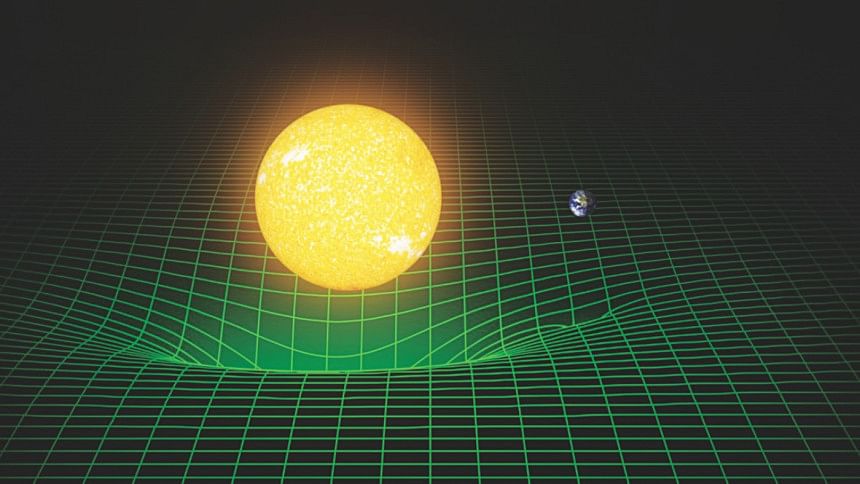Waves detected but what now?

Right now, we can only see celestial objects that emit electromagnetic radiation -- visible light, X-rays, gamma rays, and so on. Visible light can get absorbed or reflected before it reaches our telescopes, leaving us with a cruddy view of things.
But some objects -- like colliding black holes or the smoking gun of the Big Bang -- don't emit any electromagnetic radiation. They emit gravity. The gravitational waves are unchanged by the matter they move through.
And that's why the LIGO's (The Laser Interferometer Gravitational-Wave Observatory) February 11 announcement of detection of gravitational waves of two merging black holes is so important. The invisible in the universe may soon become visible.
Focusing on gravitational waves, scientists were able to "see" or "hear" (both metaphors work) black holes in action for the very first time in scientific history.
Ethan Siegel, an astrophysicist who professes physics and astronomy at Lewis & Clark College in Portland, OR, wrote in Forbes, “Imagine that instead of the Sun, Moon, planets and stars in the sky, all you had ever seen was clouds. Not the puffy white ones silhouetted against a blue sky, but the thick grey, expansive stratus clouds. And these clouds lasted for all of human history. Yet someone devised the means to part the clouds one night ... Imagine that there was just one point of light that shone through, perhaps a planet, with incredible detail on it: rings, bands, colours, and maybe even moons. How dramatically would your conception of the Universe change from then?”
Theoretical Physicist and Prof of Physics at City College of New York Michio Kaku in an interview with the Observer said, “You may say to yourself, well what's the big deal? Well, every time a new wave was opened up for scientists, it changed our understanding of who we are. They've had religious, philosophical, and emotional consequences.”
The first wave of discovery was Galileo's work with light waves, which demonstrated the Earth revolved around the sun. Galileo's findings shook the Catholic Church and its emphasis on Geocentrism to its core. The second wave, Kaku explained, took place during World War II, when radio waves were discovered as useful for providing insight into galaxies, leading to the discovery of objects in space like black holes.
“The third wave is now,” Kaku added. “The third wave could be gravity wave detectors. In the first wave we discovered planets and stars, the second wave we discovered galaxies, what are we going to discover in the third wave? Not only will we discover colliding galaxies, but we will also get into the creation of the universe. We think one of the largest sources of gravity waves is genesis itself. Now we have baby pictures of the big bang, taken about 200,000 years after the instance of creation.”
With the detection of gravitational waves, we could potentially determine what happened the moment our universe was created.
“This is still speculation, but if we have space-based gravity detectors orbiting the Earth or sun, and we detect radiation from the incident of the big bang, we could run the video tape backwards and therefore get insight into what happened before the big bang. That is, what triggered the creation of the universe,” Kaku continued. “Of course we don't know, but some people believe perhaps there was an umbilical cord that connected our baby universe to a mother universe … Once we have space-based gravity wave detectors, we should be at the brink of being able to test for the impossible, that is, the world before the big bang.”
“A lot of the things you see in science fiction revolve around black holes, because black holes are strong enough to rip the fabric of space and time. If space is a fabric, then of course fabrics can have ripples, which we have now seen directly. But fabrics can also rip. What happens when the fabric of space and time is ripped by a black hole? … A telescope that can look at the very instant which two black holes collided and this could open up a whole new chapter …”
“ … We hope to launch the first space-based gravity wave detectors in 2034 ... These space-based detectors could be millions of miles across, because there is no need for shielding, no need for a tube or a vacuum chamber, space is empty up there. You could have three laser beams connecting 3 satellites in a triangle and that could be the basis of a new generation of space based gravity detectors. So a new chapter in Astronomy, as well as Theology, could be opening up.”

 For all latest news, follow The Daily Star's Google News channel.
For all latest news, follow The Daily Star's Google News channel. 



Comments